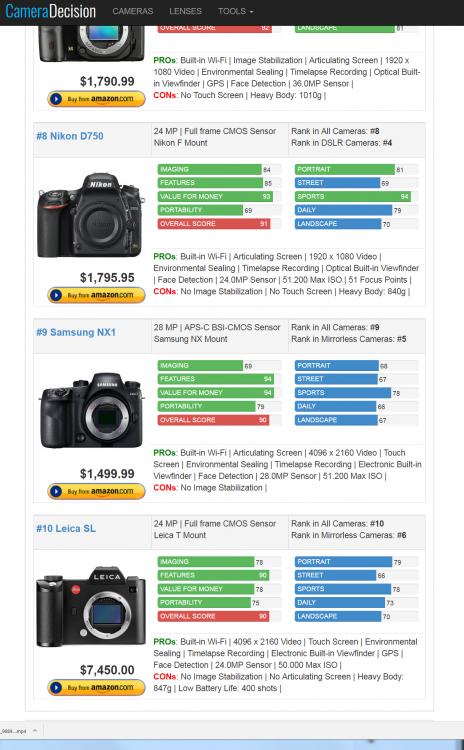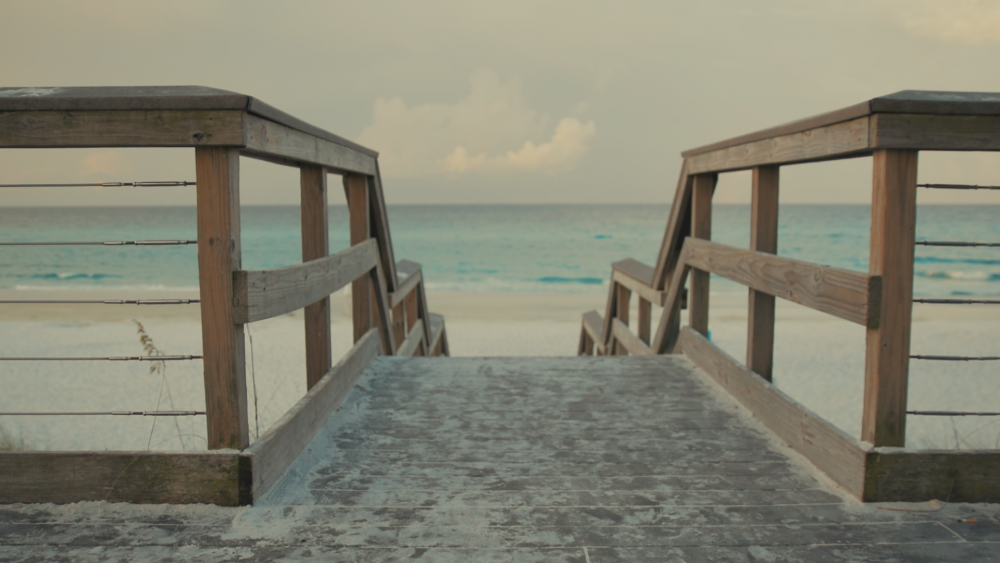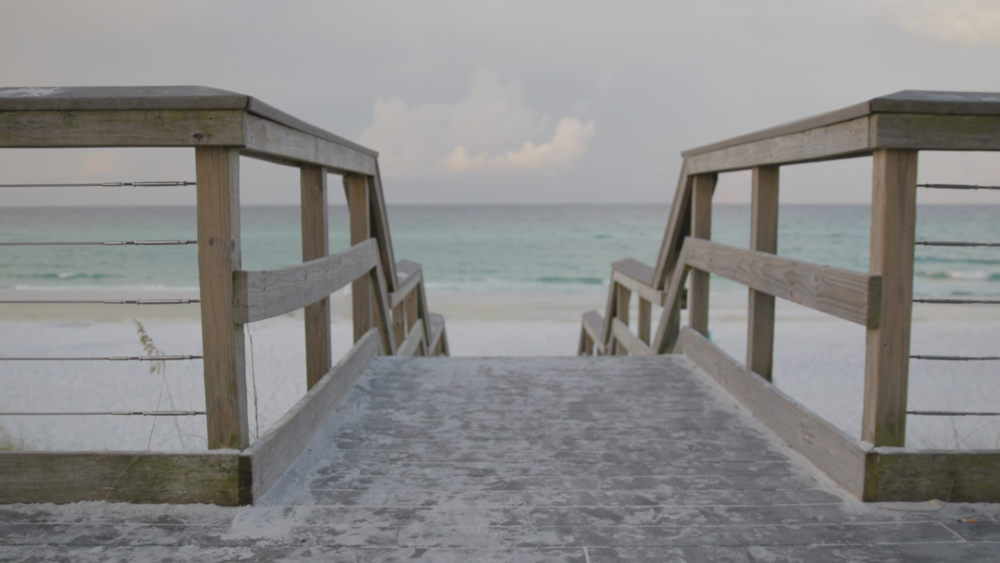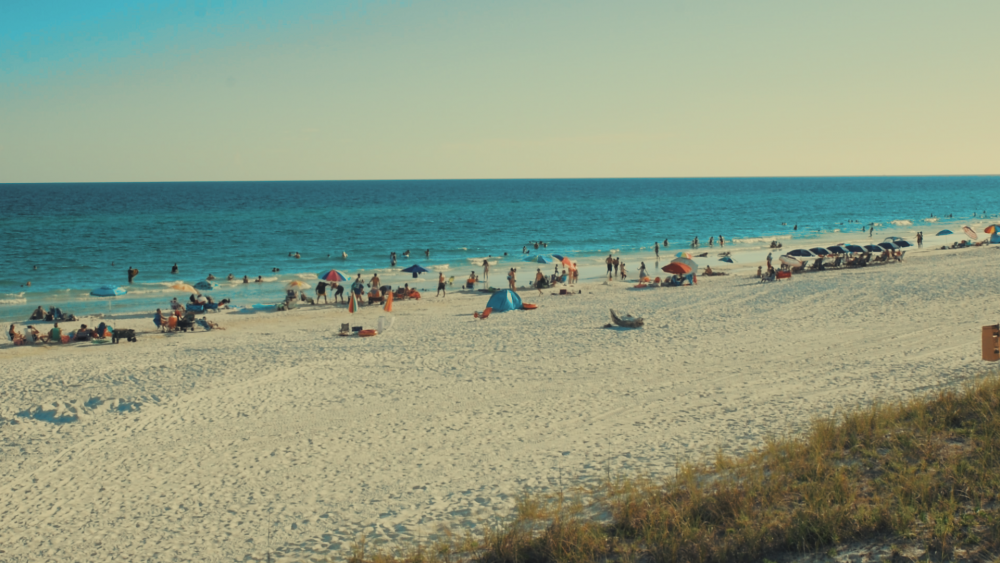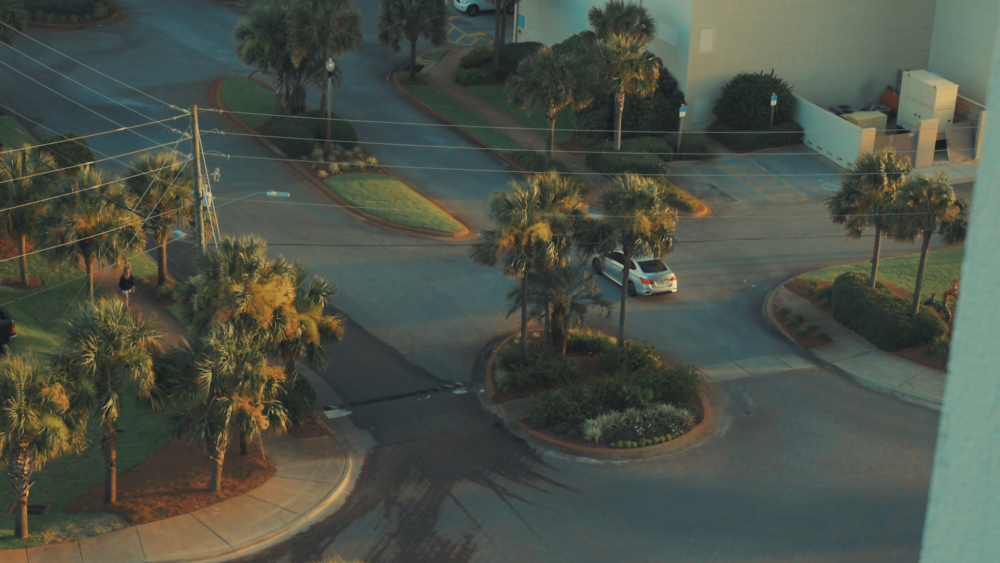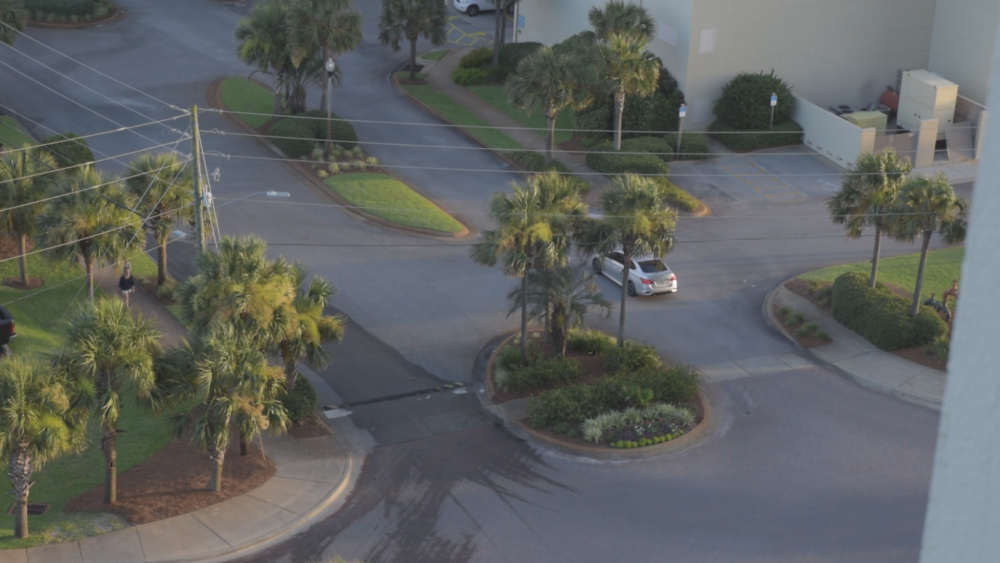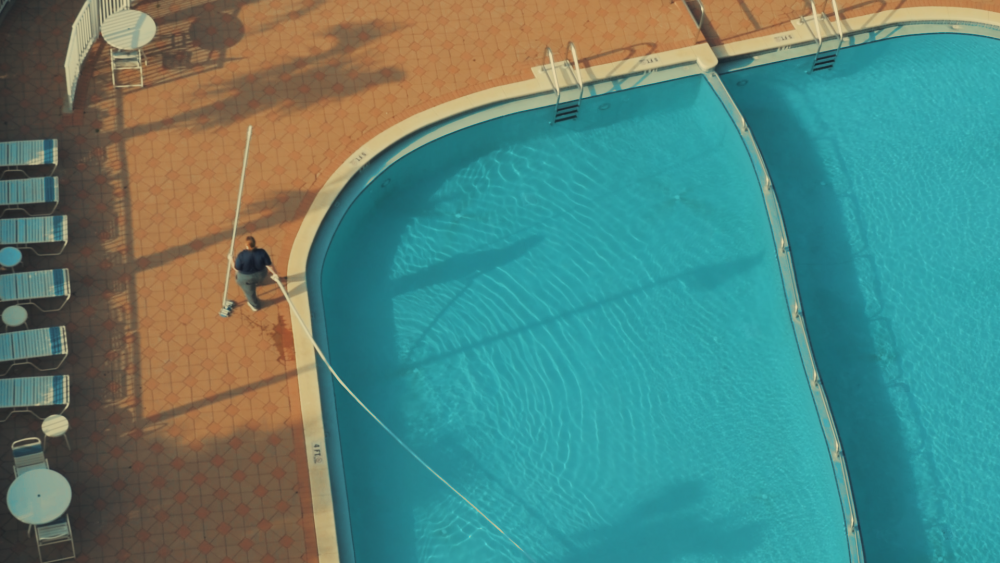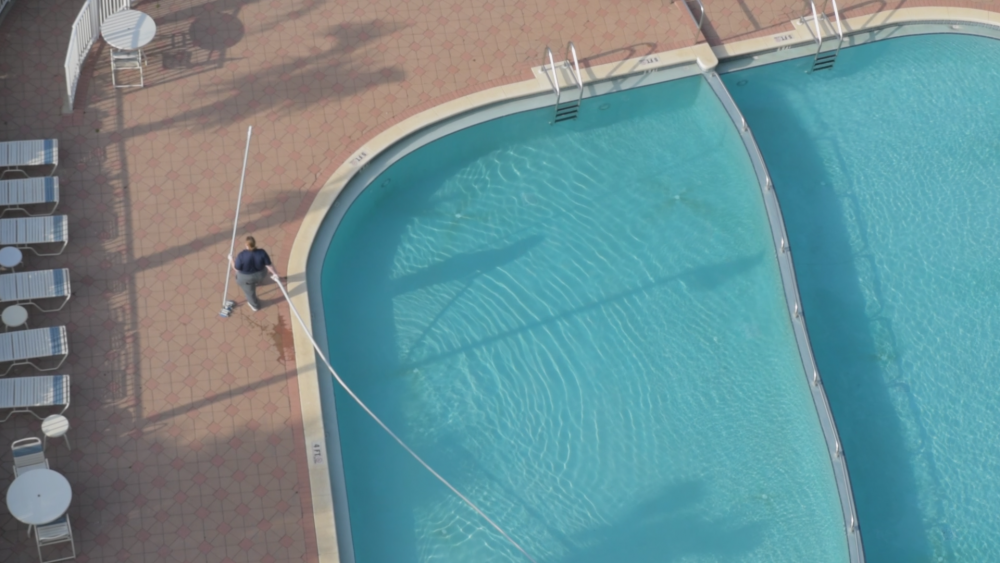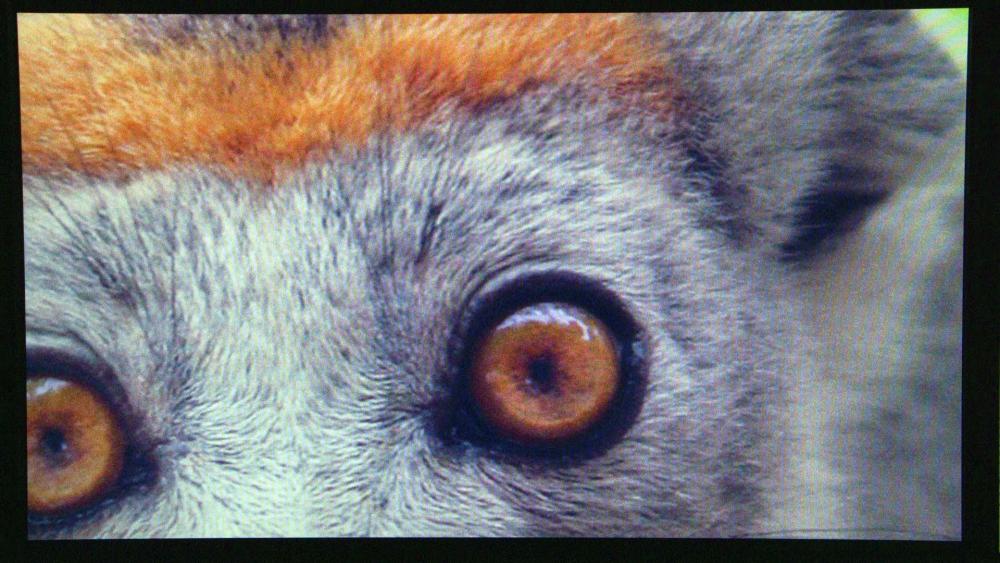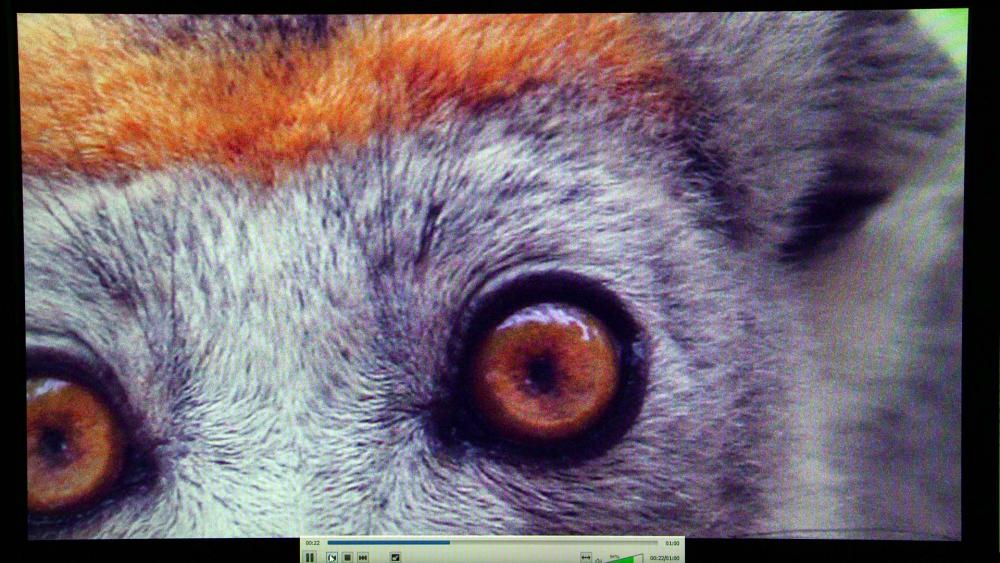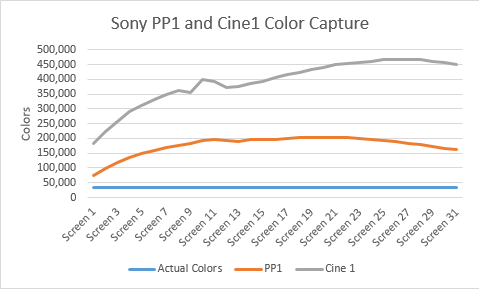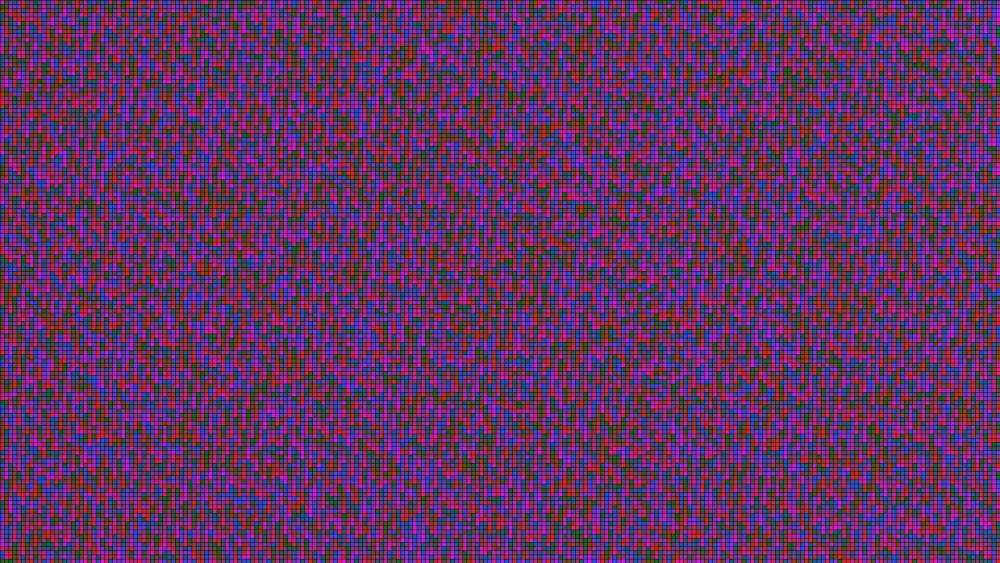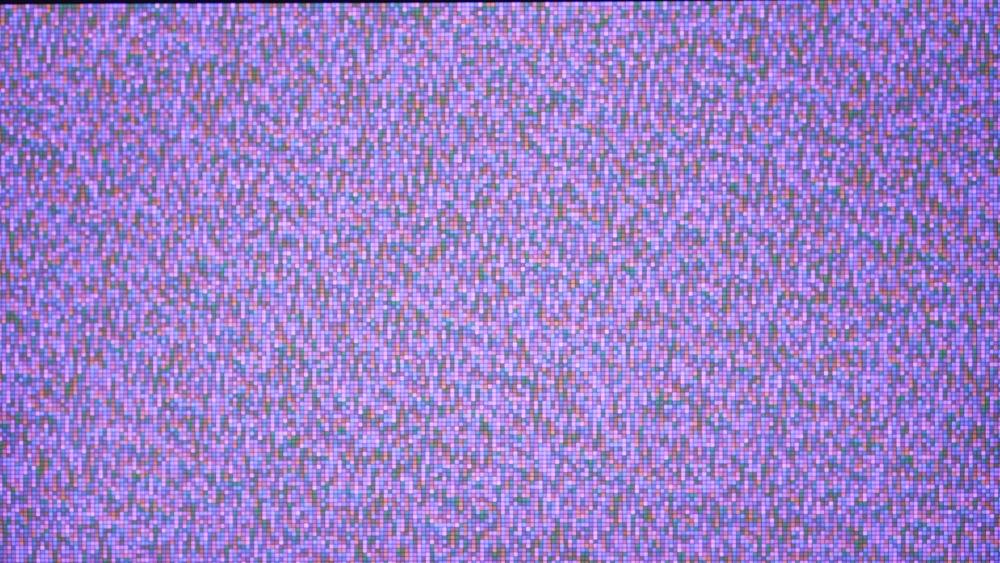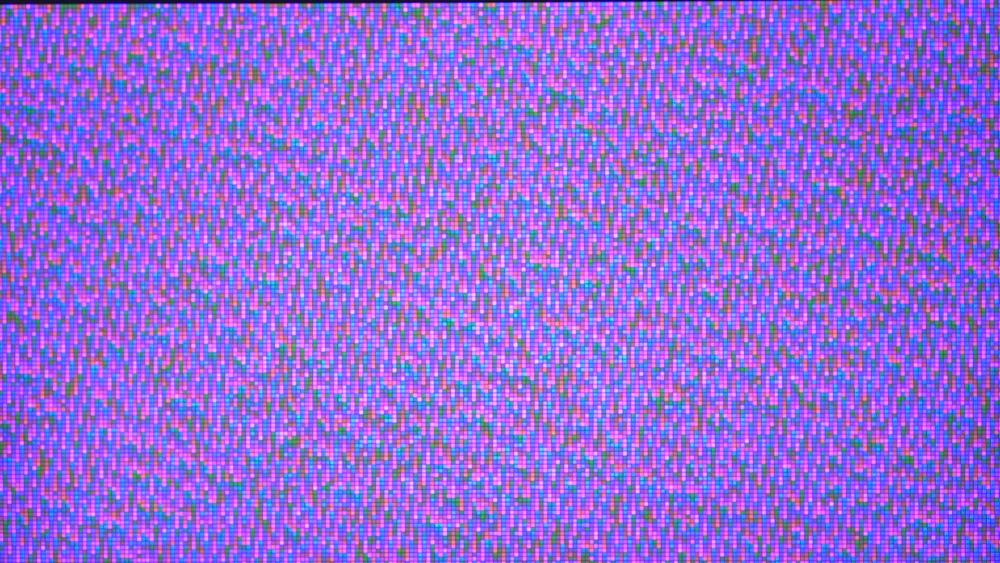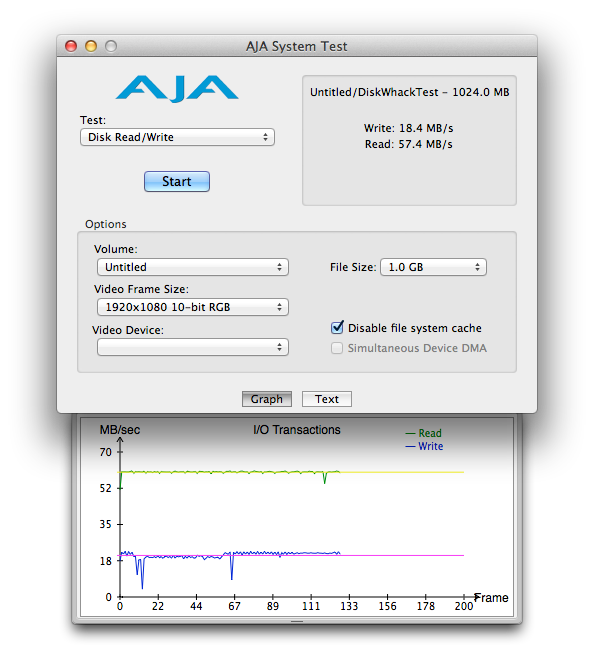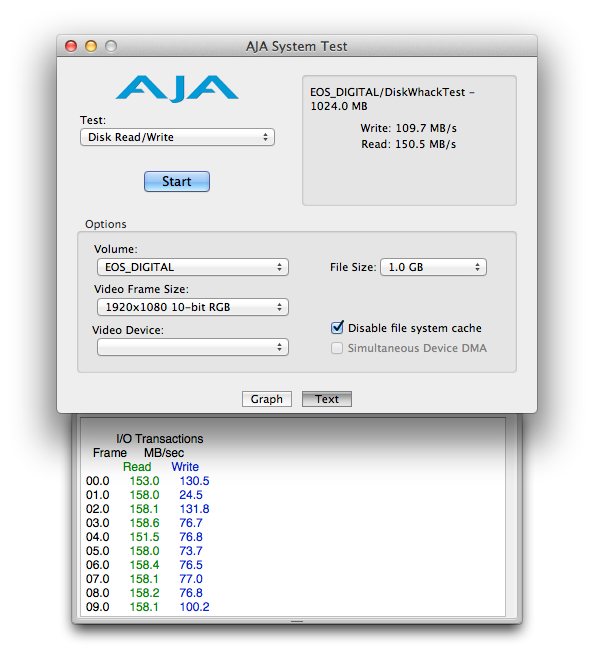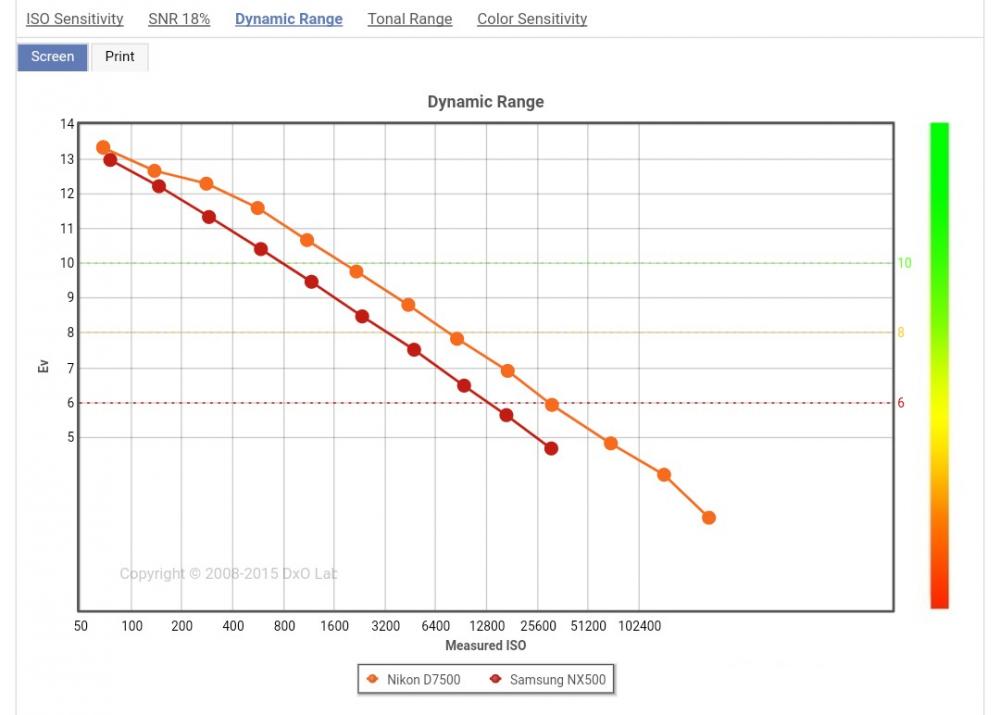Leaderboard
Popular Content
Showing content with the highest reputation on 07/20/2017 in all areas
-

Still Swimming with the big boys... Rated #9th 2017
iamoui and 2 others reacted to Matthew Hartman for a topic
Absolutely. It's my vision, I'm in control of how well (or not) I craft my image/scene. This is my rate, and my techincal requirements. This philosophy is hardly anything new. I don't typically place myself in artistically-circumstantial situations out of my control, largely speaking. There's always the tendency for small fails here and there, but those are usually logistical unknowns. Again, I'm the artist. If I have no control in what I place in my viewfinder, who does? If I have a shoot scheduled outdoors and it suddenly rains and clouds block all my golden hour light, I wait, or adapt the setting to the narrative. I don't shrug my shoulders and capture subpar images because I feel like I should be shooting something or because my camera has near militaristic capabilities. Now, I'm not ignorant to the fact that not all shooters are cinematographers shooting narratives in a mostly controlled and planned environment. Some have to document the moment as it is because it doesn't typically repeat itself or reoccur often. Sports, weddings, nature, I get it. But these subject matters have been captured long before digital ISO was a seed in anyone's mind. Ask yourself how this was done in those times. And I bet you will conclude it was done with really good logistical scouting, planning and set up. What high ISO has done is it allowed the removal of darkness as counterpoint to lightness as a narrative. It's traded a technological advatange in for an artistic disadvantage. Our we merely documentators? Is a good image about technically "seeing in the dark", or using darkness as a tool to envoke an emotional response and give light more meaning and context? You as the artist and curator of your vision must decide. Each to their own indeed.3 points -
@kidzrevil, you better tell us the focal length(s) you naughty! Looking gooood. Where is the video?:) cheers Never getting tired of some good old fashioned Seb Farges action. He is the man of joyful video work, full of life and energy and awesome taste in lenses. Here it comes, from the man himself, slr magic 10mm: Enjoy I bet Zak, @Zak Forsman, can give some more insight on the slr magic 10mm. I think it shows some very interesting characteristics in term of close to midshot distance bokeh, great dynamic perspective when moved in z axis and around the subject. See yourself in a lenstest video from Sabi Company:2 points
-
Good to see my old school hall !2 points
-
Very interesting read and great footage and images. However I have to admit that some videos are so sharp... they almost hurt my eyes. I wish I had a Moller 16. But I think there is a little advantage of the small brother: With my Moller 8/19 I can focus taking lens and anamorphic at the same time (not with Nikon glass of course). And that is a wonderful light setup. Moller-Wedel has a very long tradition in optics and microscopes. I am often nearby their factory when I am around with my racing bike2 points
-

The Bolex-Anamorphot 16/32/1.5x thread
Dick Sweeney and one other reacted to keessie65 for a topic
I can answer... but it's actually the same as asking 'how old are you' ...you mostly do not ask that ;-) But, here we go; my setup, the Bolex 16/32 1.100 dollar (yes it can!), the HCDNA, 900 dollar, rig 250 dollar, Ultron 40mm 350 dollar. I had a Iscorama 36 and sold him. This setup is huge and weight a lot more, but the quality IMHO is much better than the Iscorama. And at least, I don't sell my Bolex ever again.2 points -
Panasonic GH5 - all is revealed!
Phil A and one other reacted to Fritz Pierre for a topic
I've only had my GH5 a few weeks, with very little time to spare on it...the menu system is enormously complex...this is not a pick up and go shoot camera...as something carelessly selected in one area, disables other things elsewhere...I will say though, that once you've configured it to your liking, the GH5 IMO is simply unequalled in so many areas and in comparison to cameras costing far more...I would use it without the slightest hesitation alongside a Varicam LT (which I consider the current Holy Grail of cinema cameras!)2 points -
2 points
-
http://www.43rumors.com/ft5-next-olympus-pro-lens-is-the-17mm-f1-2/ Knowing Olympus, it's going to be far sharper than it needs to be for a 16-20mp sensor and thus much bigger, heavier and pricier than an m43 lens needs to be.... But. This may bring me back to m43. See it's my favourite focal length and I think Panasonic/Olympus have the best IBIS and ergonomics in the industry. Honestly though it pains me every time they bring out a new expensive and needlessly heavy lens. The Fuji 35mm f1.4 is lighter and smaller than the Panasonic 25mm f1.4, with a nicer metal body. And of course much small than the Olympus 25mm f1.2.1 point
-
Years later and still in top ten? (#9) and rated better than a $7k+ Leica? (this is a money is no object rating any price criteria) Im sure it would be higher in sub $1500 rankings and this is mid 2017 after all the big boys have blown their load of new cams. Fake News?? http://cameradecision.com/lists2/Top-Rated-cameras1 point
-
Below are stills from a recent travel video I made. The video was shot on my nikon d5300 with a tamron 17-50 2.8. Everything I shot at 60fps slowed down to 23.976 for that cinematic look. But if anyone is curious on the results you can get from shooting in FLAAT 11 on Nikon below are some examples. I will say I've only had decent results shooting in good light. Secondly, I am no colorist and I was using an Osiris lut on this. I am trying to go for a very stylistic, miami/beach vibe. I was happy with the end result for a fun little travel video. I might post a link to the video but below are some stills. Curious to know your guys thoughts. Yes I know on the beach flat/color grade file I went a little overboard per the sky. Love the colors in that lut though... ---edit--- I realize these are not the sharpest shots but as I'm not sure if I can share this video yet due to family members being in it this is just some examples....1 point
-

Lenses
Cinegain reacted to TheRenaissanceMan for a topic
I haven't used the elmarit, but the summicron is freaking gorgeous. Our go to lens on virtually everything. A bit creamier wide open, but stop down and the contrast snaps in for a crisper look. Like two lenses in one, and gorgeous both ways. The 35 summicron anchors my lineup. Then I've got the 50 and 90 summicrons, as well as the 28 elmarit. Would love a 19 to round out the set, especially on s35, but it's just not in the budget right now.1 point -

Lenses
mercer reacted to TheRenaissanceMan for a topic
It's not the 10mm, but this is the video that convinced me to go the SLR Magic route when I first got into micro four thirds. Far and away one of the most cinematic videos I've ever seen on the GH4.1 point -

How do I trick my GH5/4 into playing back exported .movs transferred to SD?
manueldomes reacted to EthanAlexander for a topic
I'm guessing that the profile level, keyframe distance, reference frames, etc. aren't matching what the camera records in. I use a program called "videoSpec" on my mac that tells me all this, so use that to figure out exactly the settings to export from compressor (by dropping in a file you shot on the camera), and it should work fine. Just make sure to put it in the right place on the sd card.1 point -
@cantsin, good question. I doubt there is a cheap good 24mm f2.0 lens. The Walimex 24mm 1.4 is not there, starts being sharp from 2.8 on, Fstop 1.4 for distant shots is miserable with it. For photo work the Oly 1.2 might be hard to beat in the 17mm m43 realm. For that money though I´d rather get a GH5 plus a SLR magic 12mm 1.6 and use its 1.4 crop for 4K Extele mode, making it like a 17mm lens on full frame M43. Full frame M43 sounds funky1 point
-
Hey Oliver, great topic. Thanks for posting. I don´t use luts on REC709 footage, which I´ve mostly been shooting so far other than some FS700 8bit SLOG tests. The only ones I used with success are from Juan Melara, his free Kodak and Fuji Print Luts. Some interesting results can be achieved. But after two or three months I started to grade all my footage by hand. More reliable workflow with much better control and achieving better results regarding the final look. Here is my latest example of 8bit REC709 footage, shot with the kewl and always fresh Panny G6:) By the way, Oliver, we would love to see more of your awesome work in context with the cameras you shot them with. I think you could give great BTS glimpses into the trickery of small cam big result magic! Well here my latest shot and hand graded piece:1 point
-
There are two ways to do this. The NASA spending millions on a pen to write in space approach or the Soviet using a pencil approach. (Yes,yes, I know thats turned out to be an apocryphal story but I like it anyway ) The NASA way would involve copying and renaming files (there is a catalogue file hidden away in a Panasonic folder on the SD card) and using a hex editor to append chunks from a genuine file and trick it into thinking it came from a Panasonic camera. I've just spent some time doing this and managed to change the error but not much else so you'd need to dig a lot further in. Another NASA approach would be to use a tracker in your NLE to graft the video onto the GH5 screen. The Soviet way would be to play the file you want on an iPad or some other screen and just film it with the GH5. No hacking, no plugins, no rendering. Its up to you but I know which route I'd choose, tovarich.1 point
-
V2 has a built in quick release system, shorter handle and different batteries, payload is the same as v1. I think it's a pretty universal consensus that the crane is easily the best pistol grip gimbal around, bar none.1 point
-
Pictures look impressive. Seems like no strong sharpening and nr are used. Tons of detail. If it's too noisy (I think it looks really organic) you can still apply NR.1 point
-

Are S-LOGS More Destructive Than They're Worth?
Oliver Daniel reacted to maxotics for a topic
First, Bioskop and CPC thanks for joining the conversation. Because of the way LOG extends ISO I've never doubted for a second that there's be more noise in the image. "add[ing] a colour chart to the test" is exactly what I've been trying to do. First I used one-shot charts where I noticed that aggressive LOG recording gammas reduced the pre-grading color palette by a very large amount. The gentler LOGs are another story. Some people in the thread believe the LOG method of capturing color improves perceptual image quality, even if there is data loss compared to the "linear" profile. In the end, they may be right! But I want to see for myself through some tests In order to test the color issue in more depth (AGAIN THANK YOU BIOSKOP for recognizing this should be a TO DO for anyone interested in this subject) I set up to compare how different gamma settings will capture all 16 million colors (assuming the camera is 8-bit). First, I sliced apart full RGB images which you can get here https://allrgb.com/. Here's a comparison of capturing part of this image on a monitor in EOS Cinema on the C100 (letting PS auto grad) Now with EOS standard If I'm just using my eye, I can't see much "artistic" difference between EOS std and Cinema. So I can see how, in the "real world", filmmakers like @Oliver Daniel find this subject too technical because the differences aren't great enough to effect the final product. I then wanted more control over the colors. So wrote some Python/PIL scripts to generate 32 1920x1080 frame of all colors (4 pixels a color) where the colors are sorted by luminosity because what I really want to know is where in the DR LOG shooting plays games, so to speak. Unfortunately, the aliasing issues of shooting RGB screens with RGB sensors have set me back. There are too many artificial colors and noise for me to get at what I want. Here's a graph of the screens and shooting with the A6300 in PP1 and PP5 The original BMP of 32,410 colors. 32 frames of these are captured, 5 seconds a piece, by the A6300 PP1 PP5 The data suggests that PP5, or Cine 1, is capturing more color than Sony's PP1, which is pretty close to its standard profile (I believe). So is @cantsin correct? Is there an improvement of color using a LOG profile? I still don't know. Because both captures are recording more colors than the screen is meaning to display (it should create only 32,401 colors in our eye), due to re-mixing of RGB values, I can't tell which colors each gamma recording is getting from the proper RGB mixes, and which are essentially false aliasing colors. To my eye, Cine 1 is loosing color fidelity, but I can't prove it with the data I have. To continue, I will need to created larger, probably 1-inch blocks of color on the monitor and average down to a hopefully noise-insignificant value. I'll also need to program stuff to put that data in a database and compare displayed color to captured. Don't know if I'm going to continue here. That method will need hours of capture time (to go through the screens of color) The really shrewd here might know what I could do, IF I could do this, so that is some motivation. We'll just have to see.1 point -

Fake LEXAR CF cards on ebay
EthanAlexander reacted to bootsie for a topic
1 point -
Are S-LOGS More Destructive Than They're Worth?
EthanAlexander reacted to cpc for a topic
Testing camera profiles comes with the job characteristic of being a videographer/cinematographer. The easiest (cheapest) way to get an idea of DR distribution is to shoot a chip chart at a few exposures with a constant increment and use these to make a DR curve. Here is an example I did years ago using a Canon DSLR: Also, it is been mentioned already but log profiles do not introduce noise. They raise the blacks making the noise visible. If you see more noise in the graded image, you are not exposing the profile properly. Most log profiles need to be exposed slower than nominal because the nominal ISO of the profile is chosen to maximize some notion of SNR, which is not necessarily the rating you want for a clean image (after grading). In fact, cameras do it all the time. Take a Sony A7 series camera, for example, and look through the minimal ISOs of their video profiles. See how the minimal ISO moves around between 100 and 3200 depending on the profile? That's because the camera is rated differently, depending on how it is supposed to redistribute tones according to the profile.1 point -
The quality for internal mics is very good. I wouldn't expect anything better than that, I am sure Panasonic engineers spends some time thinking about mic selection and placement on their camera, but there are a few limitations of what the internal mics of a camera can do, and that is not going to change any time soon. NZ is cool!1 point
-
Are S-LOGS More Destructive Than They're Worth?
maxotics reacted to Bioskop.Inc for a topic
These LOG problems/misunderstandings seem to be appearing a lot recently. I've read through most of the thread & there has been some really useful information put forward, some useful links (more or less). The main point that keeps coming to mind is, Has anyone actually tested the DR of their camera with & without the LOG profile? I know this might seem such a basic thing, & might be insulting to some, but it is the thing that is screaming out to me if you want to know how a LOG profile bahaves. You read time & time again how professional DPs test cameras, so perhaps this is what you need to do to understand how the LOG profile behaves & so understand how to use the LOG profile. Simply put, the easiest way to do this is to test the DR of the camera with & without the LOG profile. The following quote came from another forum & was suggested by David Mullen (a professional DP) as a simple way to do this: "Put a white card and a black card on each side of an 18% gray card -- under and overexpose in whatever increments you want until you can't see a difference between the white and gray card at the overexposed end and between the gray and black card at the underexposed end. Make sure you shoot at whatever is the widest dynamic range recording format the camera offers (raw, log, cine gamma, hypergamma, etc.) but also test it in the narrower Rec.709 display gamma range just for comparison." You can, of course, do this anyway you want & test all sorts of different aspects of the camera - you can test how different ISO/ASA behave, how different F stops behave etc... I'd suggest that you use a Histogram & Peeking (make notes of the values at which the camera over exposes/under exposes - all of them). You can use ND filters, but make sure if you use a Vari-ND that it has markings. You can, and considering the topic at hand, should add a colour chart to the test - but if you do this White Balance the camera to the white piece of card (with BM cameras you'll need to test the various WB presets). You should also try to make sure the Black card is as black as possible - "The black card should be as black as possible, some people create a recessed box lined in black velvet". Just remember that not all recording formats are equal e.g. 8bit vs.10bit or H264 vs. ProRes (do the test with what you'll be using). And do the test using your equipment & how you intend to shoot. Having done this simple DR test you should now know how the LOG profile of your specific camera behaves, compared to the preset profiles (Rec.709). If you make careful notes then you'll know what to do with your camera in a variety of situations. Finally, please remember LOG isn't RAW & you don't need/have to use either of these recording profiles to get great images! Oh, and sometimes you might have to make a choice & crush blacks or blow highlights.....1 point -
1 point
-
It's a pity the Nikon Hacker raw video thing never seemed to go anywhere. Imagine ML-esq raw on the D5300 or D750 etc..1 point
-
Light L16 - A Camera Breakthrough!
Trek of Joy reacted to silvertonesx24 for a topic
Yeah their "Light Gallery" isn't really exceptional considering marketing would be curating their very best shots.1 point -
Ouch! ... and yet, DxOMark gives color depth scores in "bits" (bit depth?), implying a fundamental misunderstanding of digital color depth. Their explanation of their color depth metric is somewhat vague and based on a dubious characteristic, which they term as "color sensitivity." There is a mathematical formula for absolute color depth of a digital system. A fairly accurate figure can also be given to represent the absolute number of shades above the noise floor (effective bit depth -- not color depth). Don't know why DxOMark doesn't use these basic metrics.1 point
-
Panasonic GH5 - all is revealed!
AaronChicago reacted to Phil A for a topic
You can't imagine how happy I am that it was the case of me just being dumb. Thanks, I have no idea why I was so blind not to figure that out. Love it.1 point -
Which iMac 2017 for editing and grading?
Jimmy G reacted to Richard Bugg for a topic
This bloke shows how he bought a mid-tier 2017 iMac, pulled the screen off then replaced the CPU with an Intel i7, added an SSD and 64GB RAM to apparently achieve faster performance than any other 2017 iMac. Perhaps this is the type of hybrid Hackintosh that makes most sense for the DIY handyman.1 point -
Yup, the low prices which both the D750 and D500 are reaching are unbearably tempting me....1 point
-
If you're looking for a cheap, small and ludicrously flexible rig solution then definitely check this out. Because it can be articulated in all directions you can make whatever you want out of it. What's interesting is if you make it be a shoulder mount you can lock it onto your shoulder like a hook.1 point
-
http://www.eoshd.com/2017/01/opinion-dxomarks-camera-scoring-makes-zero-sense/1 point
-

Power2000 batteries
MountneerMan reacted to SMGJohn for a topic
I would just like to add an update to people still looking for batteries for the NX1 and NX500 or the BP1130 and the BP1900 batteries respectively. The best third party ones that are still being made to these days and are in big quantity is the Ex-Pro brand. Genuine BP1130 batteries can still be sourced from eBay for a reasonable price but the NX1 you have Ex-Pro I highly recommend this brand as its even better than the original Samsung ones and higher capacity from 1900mAh vs 2660mAh Ex-Pro Elite https://www.amazon.co.uk/Ex-Pro-Samsung-BP1900-2260mAh-Li-x/dp/B00YEZ2XLG/ref=sr_1_8?ie=UTF8&qid=1500080577&sr=8-8&keywords=BP1900&th=1 http://www.ebay.com/itm/New-Genuine-Original-Samsung-BP1130-Battery-For-NX200-NX210-NX2000-NX300-NX300M-/331534428837?hash=item4d30fdeaa5:g:PIYAAOSwEgVWTCr21 point -
DxO score can't even represent their own testing. Here is actual DR comparison: The difference is more than one full stop, but not at base ISO. Something happens at ISO 400 that needs a IP licence Samsung didn't have. CMOS is a matured tech, read noise on these new sensors are ridiculously low, so we are limited by noise generated by randomness of light. which we can't do much about that.1 point
-
Is a sub $900 or 1.200 laptop enough for raw and/or 4k in Davinci?
MichaelJohnson reacted to Kisaha for a topic
@gt3rs What Rog do you have? GL502VS ? I see crazy heat on those laptops (both 502 and 702). Can you comment about thermals? How important do you thing the GPU is on an editing notebook? Cheers.1 point -
Spending a second to think about new Canon products is a complete waste of time until they probably release a full frame mirrorless camera in 500-1000 days, which then at least might have a 10% chance of being competitive against Sony products (I say that owning a 1DC, 1DX2, 5D4, the whole Canon lens lineup and much more). Part of the slow innovation even might be forums like CanonRumors, who are full of Canon fanboys defending their brand, so that Canon marketing might think everything is alright. If you just list pure facts how Canon is behind in features at CanonRumors too often, you get banned - the site has the same lamel spirit as Canon. The administrator even x-es out single words if you write something like "SonyAlphaRumors". Some in the Canon community are like Trump and Trump voters, trying to undermine the credibility of those who criticize with nothing else but the truth. In the end - no matter if it's Canon or Canon websites - it's all about the revenues. The only answer of users who want to see improvements is that no money and attention should go in these directions, until they change their policies.1 point
-
This is not 1950 where companies don't give a damn about customer's preferences, How arogant you must be to think so little. Of course they care. "pure" business strategy wil lgive you nothing when all your customers will enjoy competitor's products. don't be naive, these companies exist because we buy their product (not me, has not give a single euro to canons crap)1 point
-
Sony & Panasonic didn't have as established a stills shooter customer base. The Sony/Panasonic stills shooters were casual weekend shooters. Conversely, Canon had and still have the vast majority of their customer base - the people buying their products - who are professional shooters. Sony & Panasonic were able to be much more nimble in the market and take bigger risks because they had less to lose in that market. Canon takes a risk on a product - say on a product that caters to a smaller market - and they have a lot more to lose. You're very good at being condescending, but perhaps spend more than 3 seconds comprehending what you're reading before jumping in with a comment. And really? Big words? I didn't know words like disingenuous were big words for anyone that passed middle school...1 point
-
It's pretty disingenuous to use Panasonic as an example considering their sensor sizes are literally half that of the Canon. Use Sony's A7 series (which only the most recent iteration of included internal 4k, by the way - though sure they at least offered 4k externally before that), and a6000 series - sure. They've been able to make 4k internal happen in a much smaller body, though they still took longer than Panasonic. There's significantly more data to process on a full frame sensor in 4k vs an m4/3 sensor. I've said it before and I'll say it again. Video shooters are not a huge market for Canon DSLRs and mirrorless. That's why the compromise you talk about has come at the costs of video. That's why they're attempting to develop better photo feartures first. Does that mean they couldn't have developed the technology to do everything you want? Course not. But obviously their focus is and always has been still shooters in the DSLR line-up. That's why they have a Cinema EOS line-up to cater for video shooters. Sony and Panasonic don't/didn't have the established customer base and were/are much more able to be nimble and take bigger risks. That's why they were able to make such a dent.1 point
-
To add to the mystery, there is the possibility that someone within Canon leaked the possibility of 10 and 12-bit RAW video the ML forum. That effort had been dead-as-a-door-nail for a long time. If it wasn't for that anonymous tip, which is VERY technical in nature, we'd never know that Canon cameras can essentially record a kind of compressed RAW video; that is, much less than the current 4 gig a minute. Even without 12-bit RAW, I don't understand why Canon doesn't allow 4-minute RAW recording on their 5Ds. The only real worry is temperature and they can easily fix that with a limit. Bottom line, Canon could put 12-bit RAW on their cameras today. The ML devs have recently proven that. As for the C100/300/200 line, I no longer see a threat from their consumer cameras even if they had 4K. The cinema sensors are built for cinema, that is, video resolution with large pixels, so you wouldn't get the same low-light video with your 80D 4K, say, that you would from the C100. Then, of course, all the buttons, XLR, etc. I've never bought the argument that Canon would hurt their cinema business no matter how powerful they made their consumer cameras. Of course, that might not be the case in Canon. In fairness to Canon, Sony can't seem to do 4K in-camera downscaling to 1080 well (at least in my 6300). However, I can't see how they can't output 4K in teh 6D II and let those who are inclined, downscale on their PC. So I see some merit in the argument that Canon is very dismissive of enthusiast video users. They seem to take the position that unless it can be done in camera, they're not interested in what happens to video downstream. The 4K coming out of the A6300 and A6500 is incredible, to me. And they're great cameras, period. Sony keeps releasing more lenses. Once you look at 4K out of those cameras next to Canon video it's hard not to see the difference.1 point
-
1 point
-
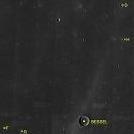
Things I've Learned of Recent for the Camera
EthanAlexander reacted to hansel for a topic
For that creamy dreamy look, I love it :D also keeps the focusring lubricated when manically racking.1 point -

Things I've Learned of Recent for the Camera
EthanAlexander reacted to Oliver Daniel for a topic
1. Think about the light before anything else. 2. Change that lens, it may look way better on different glass. 3. When the talent is in thought, or simply just waiting for a direction, roll the camera without their knowledge. You can get some really useful, very natural moments. 4. Don't do the shot once. You may pull off the technique better on repeat. 5. Bring 634 lens cloths to a shoot, because you will lose 633 of them. 6. Never settle on a grade straight away. Look at it again tomorrow. Those skin tones might be green and you had no idea. 7. If you're not sure if it's right, it's definitely not. Trust yourself. It's got to feel right, always. 8. Adjust the light again. It will look better. 9. Eye lights. Make the effort. 10. Buy a RED cam. Send it back. Read EOSHD and get confused. Get a GH5.1 point



